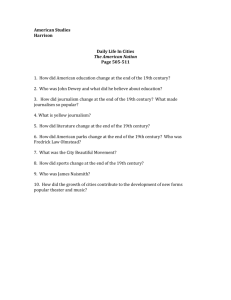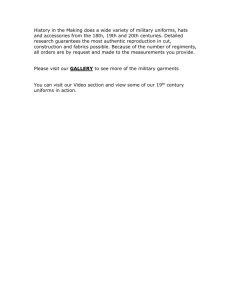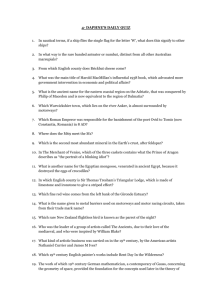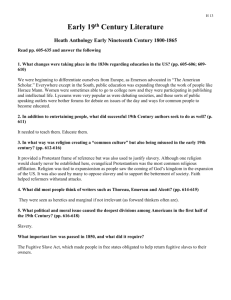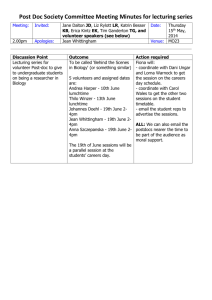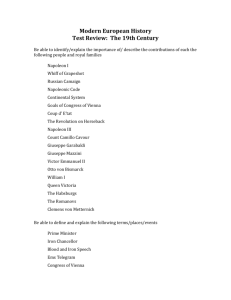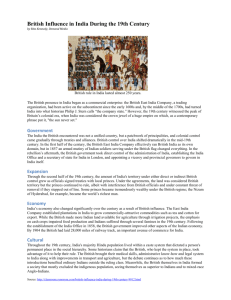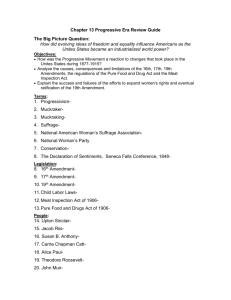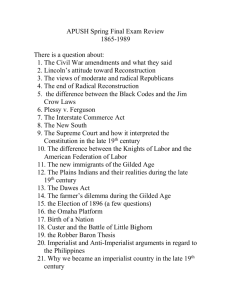Unit 6 NEW
advertisement
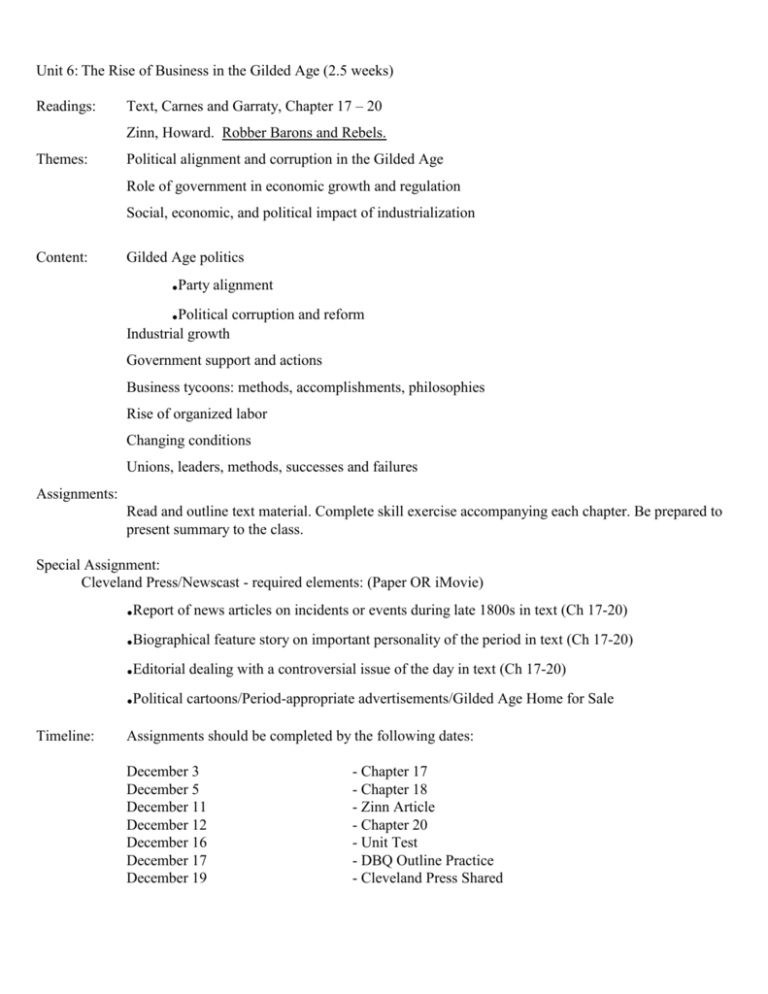
Unit 6: The Rise of Business in the Gilded Age (2.5 weeks) Readings: Text, Carnes and Garraty, Chapter 17 – 20 Zinn, Howard. Robber Barons and Rebels. Themes: Political alignment and corruption in the Gilded Age Role of government in economic growth and regulation Social, economic, and political impact of industrialization Content: Gilded Age politics .Party alignment .Political corruption and reform Industrial growth Government support and actions Business tycoons: methods, accomplishments, philosophies Rise of organized labor Changing conditions Unions, leaders, methods, successes and failures Assignments: Read and outline text material. Complete skill exercise accompanying each chapter. Be prepared to present summary to the class. Special Assignment: Cleveland Press/Newscast - required elements: (Paper OR iMovie) .Report of news articles on incidents or events during late 1800s in text (Ch 17-20) .Biographical feature story on important personality of the period in text (Ch 17-20) .Editorial dealing with a controversial issue of the day in text (Ch 17-20) .Political cartoons/Period-appropriate advertisements/Gilded Age Home for Sale Timeline: Assignments should be completed by the following dates: December 3 December 5 December 11 December 12 December 16 December 17 December 19 - Chapter 17 - Chapter 18 - Zinn Article - Chapter 20 - Unit Test - DBQ Outline Practice - Cleveland Press Shared Chapter 17 After Reading Chapter 17, I can… 1. Describe how the tide of materialism among Americans in the late 19th century fostered the concepts of laissez-faire and Darwinism. 2. Compare and contrast the major political parties of the 1870s-1880s. 3. Explain the significance of Booker T. Washington’s “Atlanta Compromise.” 4. Identify the federal government’s policies toward the Plains Indians in the late 19th century, and explain the relative success and failure of each. 5. Compare and contrast the key features of the mining, farming, and cattle frontiers in the late nineteenth century, and identify the significance of the railroads to each. People, Places, and Things to Understand: Laissez-faire: Social Darwinism: “waving the bloody shirt:” Bonanza farm: Custer’s Last Stand: Plessy v. Ferguson, 1896: Civil Rights Cases: Burlingame Treaty, 1868: Sand Creek Massacre: Dawes Act: Black Hills: Timber Culture Act: Desert Land Act: Joseph Glidden: Ida B. Wells: A Century of Dishonor by Helen Hunt Jackson: Chapter 18 After reading Chapter 18, I can: 1. Evaluate the importance of the railroads to the development of the national economy in the late 19th century. 2. Describe the impact of Andrew Carnegie in the establishment of the steel industry, and compare it to the impact of John D. Rockefeller in the petroleum industry; focus on why “concentration” was the tendency in these and other enterprises in the late 19th century. 3. Compare and contrast the ideas of Henry George, Edward Bellamy, and Henry Demearest Lloyd, and compare and contrast their ideas to those of late 19th-century Marxian socialists. 4. Understand conditions that gave rise to labor unions and labor violence in the late 19th century. People, Places, and Things to Understand: Long haul/short haul inequity: Rebates: Trust: “Granger Laws:” Injunction: Collective bargaining: Bessemer Process: Standard Oil: ICC: Knights of Labor: Pullman Strike: Jay Gould: J. Pierpont Morgan: Terence V. Powderly: Samuel Gompers: Haymarket Riot: Eugene V. Debs: Chapter 19 After reading Chapter 19, I can: 1. Discuss the lifestyles of middle-class families and wage earners in the late 19th century. 2. Differentiate between “old” and “new” immigration. Assess the reception of “new” immigrants. 3. Explain how and why cities grew in the late 19th century and relate this to late 19th century social problems. 4. Summarize religious criticisms of America’s urban and industrial expansion and assess the solutions critics provided. People, Places, and Things to Understand: “culture of consumption:” Padrone system: Nativist: Tenement: Settlement house: “Birds of passage:” American Protective Association: How the Other Half Lives by J. Riis: Social Gospel: Louis Sullivan: Jane Addams: Hull House: Washington Gladden: James Naismith: Dwight L. Moody: Chapter 20: After reading Chapter 20, I can… 1. Identify the developments in the late 19th century that were responses to the public’s thirst for knowledge. 2. Compare and contrast the key changes that occurred in American education in the late 19th century, from public schools to graduate schools. 3. Compare and contrast the definitions of literary romanticism, realism, and naturalism, and provide examples of each. 4. Identify the major assumptions of pragmatism. People, Places, and Things to Understand: Chautauqua Institution: Joseph Pulitzer: William Randolph Hearst: Oliver Wendall Holmes, Jr: Mark Twain: Turner’s “Frontier Thesis:”
